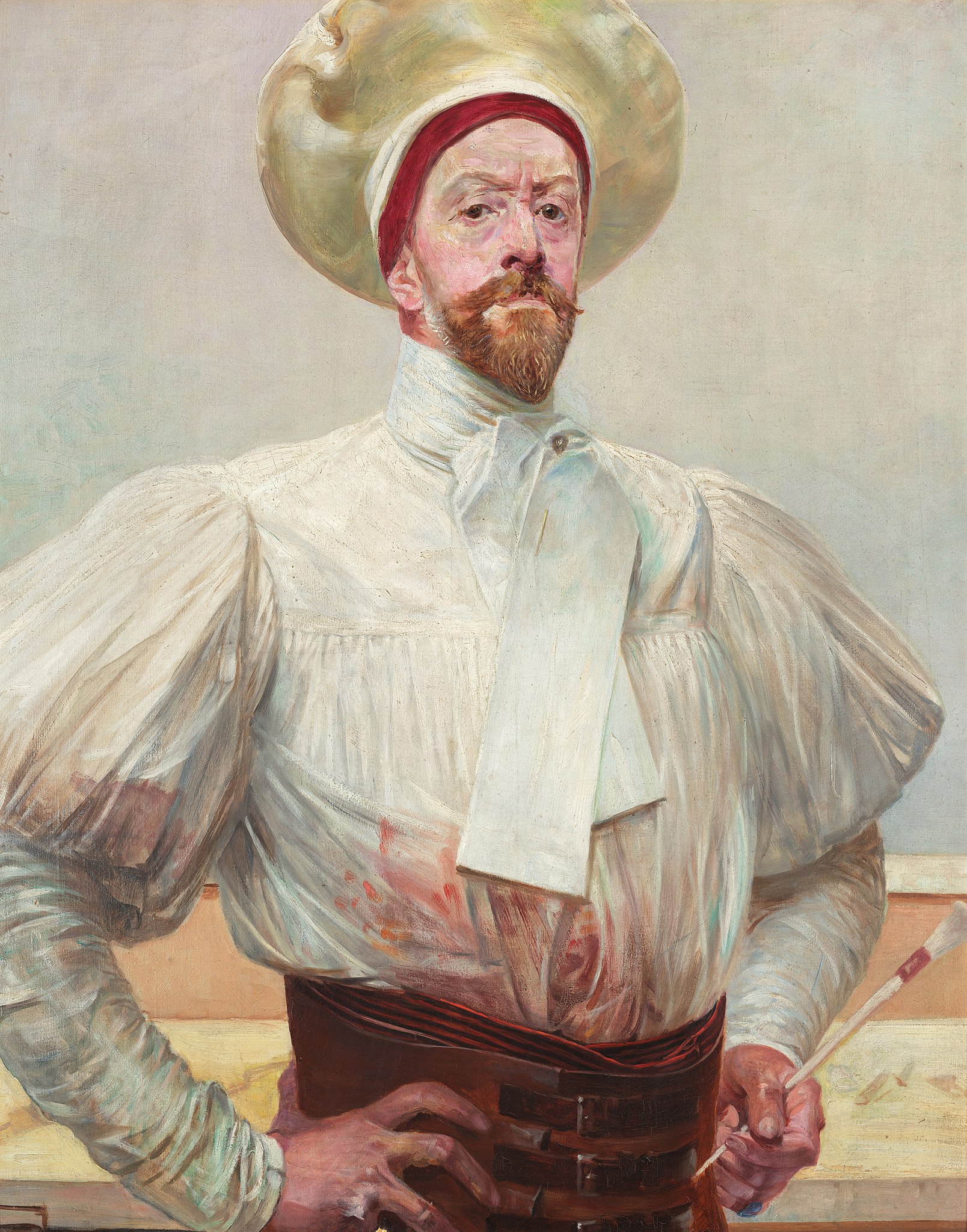It's Sunday, so let's move to beautiful Krakow (Poland) and the National Museum's collection. Today we will feature a self-portrait of Jacek Malczewski, a Polish Symbolist painter who was one of the central figures of the Young Poland movement.
Self-Portrait in a White Dress is of particular importance in the artist’s oeuvre, among countless self-portraits. Malczewski presents the top half of his body dressed in a white, women’s blouse with puffy sleeves; a tied collar decorated with a gold clasp; and a white, fancy beret with a red cap band held tightly against the temple. A wide, leather highlander belt over a multicolored woven belt wrap the hips. The ceremonial pose, with the right hand supported on the hip (a knight’s gesture) and the left hand presenting a brush as an attribute of the painter’s vocation, gives the portrait an official character, though not devoid of grotesque elements.
Malczewski’s self-portraits aroused a particular irritation from his contemporary critics, accusing the artist of excessive pride and a tendency to “costume making”. The painting, like all symbolic works, is not subject to unambiguous interpretation; one can only try to read its meaning. The painting, considered against the background of other self-portraits in which he presented himself in various incarnations, draws attention with a combination of male and female, folk and noble, and fancy costume elements, as well as with the metaphors of the colors used. The combination of contradictory clothing features, treated as a material sign of personality, may suggest the artist’s sense of achievement in the development of his own androgynous spirit of completeness. The idea of an androgyne as an original, lost human figure and a necessary goal of mankind’s aspirations, derived from Gnosticism. It was one of the basic problems of literary and artistic symbolism. Earlier it was present in romantic mysticism, of which Malczewski was an heir and follower. According to Romantic and Symbolist beliefs, artists and poets, as people crossing the intellectual and spiritual horizons of the epoch, striving for beauty and ideal, always felt the incompleteness of human nature and the need to regain lost perfection more strongly. As higher spirits, they were closer to achieving the ideal.
In Malczewski’s work, the symbolic integration of personality is also emphasized by a set of colors. White, which dominates the painting as a painterly equivalent of divine light, is a metaphor for perfection, but it is also combined with the female element. On the other hand, patches of amaranth red may be a sign of the male element, and at the same time an expression of suffering, which always accompanies the role of the genius artist.
P.S. Jacek Malczewski was one of the key artists of the Young Poland movement. Discover Malczewski's portrayals of death.


 Jacek Malczewski
Jacek Malczewski